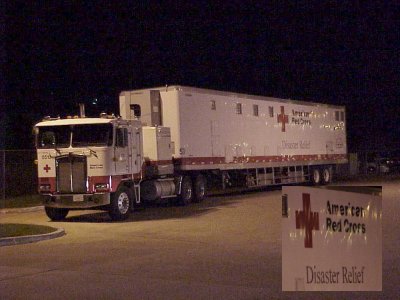Lili
Hurricane Lili began her trek towards
Louisiana on Sept. 21 several hundred miles east-southeast of the Windward
Islands. Lili was a disorganized system for most of her life.
She, however, more than made up for her shaky start toward the end of her
life. The storm moved steadily on a west-northwest track crossing
the southern Windward Islands as a minimal tropical storm. Lili then
intensified in the eastern Caribbean nearly reaching hurricane strength
south of Puerto Rico on Sept. 24 with winds of 70 mph.
Poor upper level atmospheric
conditions weakened Lili back to a tropical depression for 24 hours on
Sept. 26 at 1500 Z. By the 1500 Z report on Sept. 27, Lili had once
again regain her Tropical Storm status with winds of 40 mph. Lili
fluxuated in strength through Sept 29 while north of Jamaica. Finally,
on Sept. 30 at 1500 Z, she made category 1 hurricane status just northwest
of Jamaica with winds of 75 mph.
With Lili in a growingly favorable
environment, all models indicated significant strenghening. She did
not disappoint. In fact, Lili exceeded model predictions. The
storm became a major category 3 storm with winds of 120 mph at 1500 Z on
Oct. 2 and continued to "bomb" into a dangerous category 4 storm at 1800
Z on Oct. 3. Lili's winds peaked at 145 mph with a minimum central
pressure of 938 mb or 27.70 inches of mercury.
Coastal residents of Louisiana
prepared for the worst, as a devastating hurricane approached the central
Louisiana coast. Even inland residents were preparing for damage
with inland hurricane and tropical storm watches/warnings extending as
far north as southern Arkansas. As quickly as Lili bombed, she began
to weaken just as the storm approached the coast. She crossed the
central Louisiana coast on the western side of Vermilion Bay and Marsh
Island as a category 2 storm with winds of 100 mph, weaker than forecast.
Lili continued her march northward
toward Alexandria spawning tornadoes along the way. The center of
Lili, now downgraded to a tropical storm, crossed Monroe around 10 PM,
October 3. Winds in and around the Monroe were sustained at 25-35
mph with gusts over 50 mph producing tree damage and power outages across
the region. Radar estimates along with actual reports indicated that
2-5 inches of rain fell along Lili's path over northeast Louisiana.
Richwood High School's weather station recorded a 52 mph gust at 7:05 PM
and a low pressure of 29.28" at 9:50 PM.
Why did Lili "bomb" into a category
4 storm? Why did she weaken just a quickly? These are questions
that meteorologists and tropical experts will ponder for years to come.
As for why Lili strengthened so quickly is still not understood other than
conditions in the central gulf were primed for rapid intensification.
More direct evidence is present as to why the storm weakened, however.
Lili encountered cooler waters in the northern gulf near the coast.
In addition, upper level support began to break down ahead of an approaching
longwave trough across the central United States.
When the center of Lili reached
Alexandria, she began to pull in dry air from the west, as evident on radar
images. This was the final blow to the storm. Lili quickly
weakened into a tropical depression north of Monroe and was pulled into
the approaching cold front in the Mid-West.
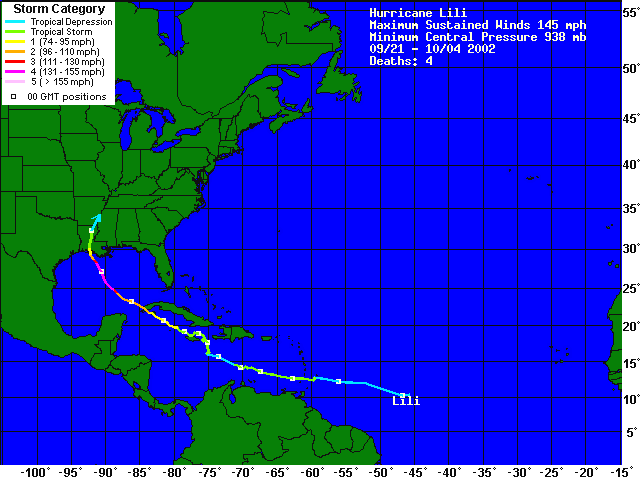
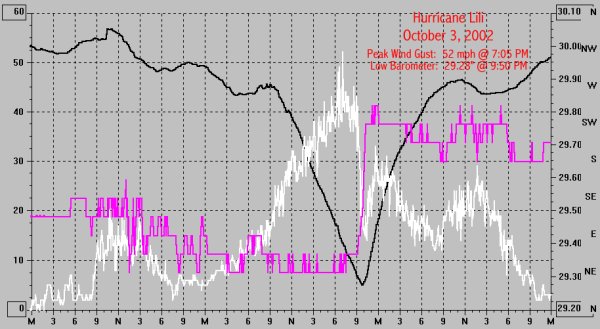
Graph of Lili's weather conditions
as she passed over Monroe, Louisiana at 10 PM, October 3, 2001. The
black line represents the barometric pressure, the white line represents
peak wind gusts, and the red line indicates wind direction.
Local Relief Efforts Click
HERE
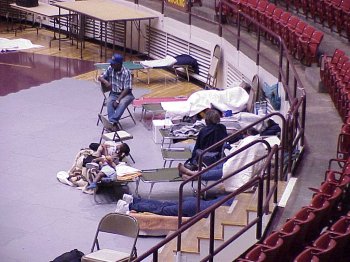
Satellite/Radar Images of
Lili
Click on images below for
a larger size
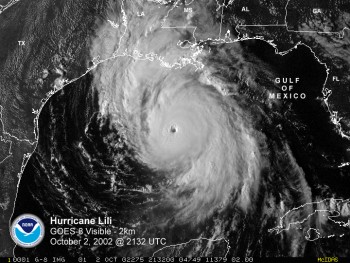 Visible image at peak intensity
- 145 mph
Visible image at peak intensity
- 145 mph
|
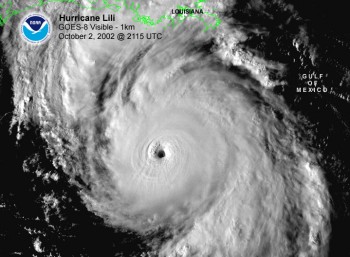 Close up of Lili at peak
intensity - 145 mph
Close up of Lili at peak
intensity - 145 mph
|
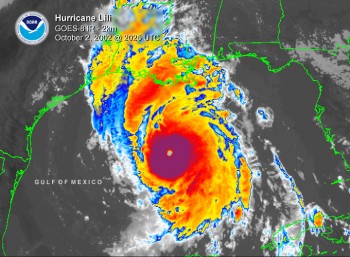 Color enhanced infrared
at peak intensity - 145 mph
Color enhanced infrared
at peak intensity - 145 mph
|
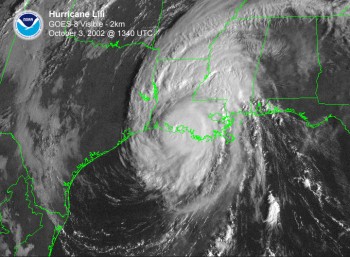 Visible image of Lili at
landfall - Vermilion Bay, Louisiana
Visible image of Lili at
landfall - Vermilion Bay, Louisiana
|
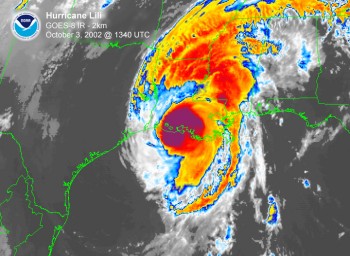 Color enhanced infrared
image at landfall
Color enhanced infrared
image at landfall
|
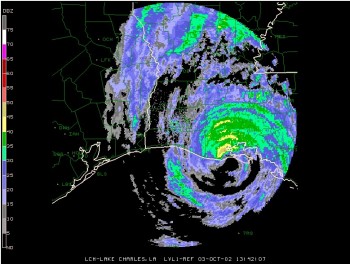 Lake Charles radar of Lili
making landfall
Lake Charles radar of Lili
making landfall
|
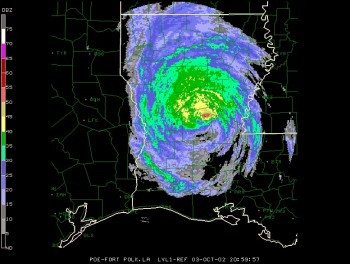 Fort Polk radar of Lili
nearing Alexandria, Louisiana
Fort Polk radar of Lili
nearing Alexandria, Louisiana
|
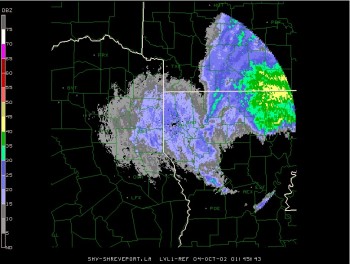 Shreveport radar of Lili
over Monroe, Louisiana
Shreveport radar of Lili
over Monroe, Louisiana
|
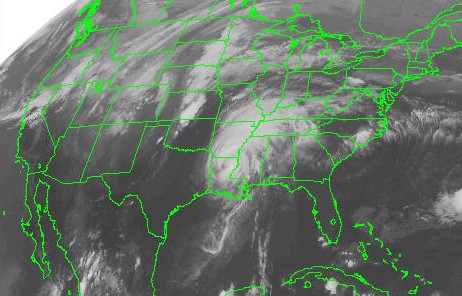
Lily as she moves over Monroe,
Louisiana
Red Cross Disaster Relief
Truck Parks in Monroe Tuesday Night Enroute to South Louisiana
